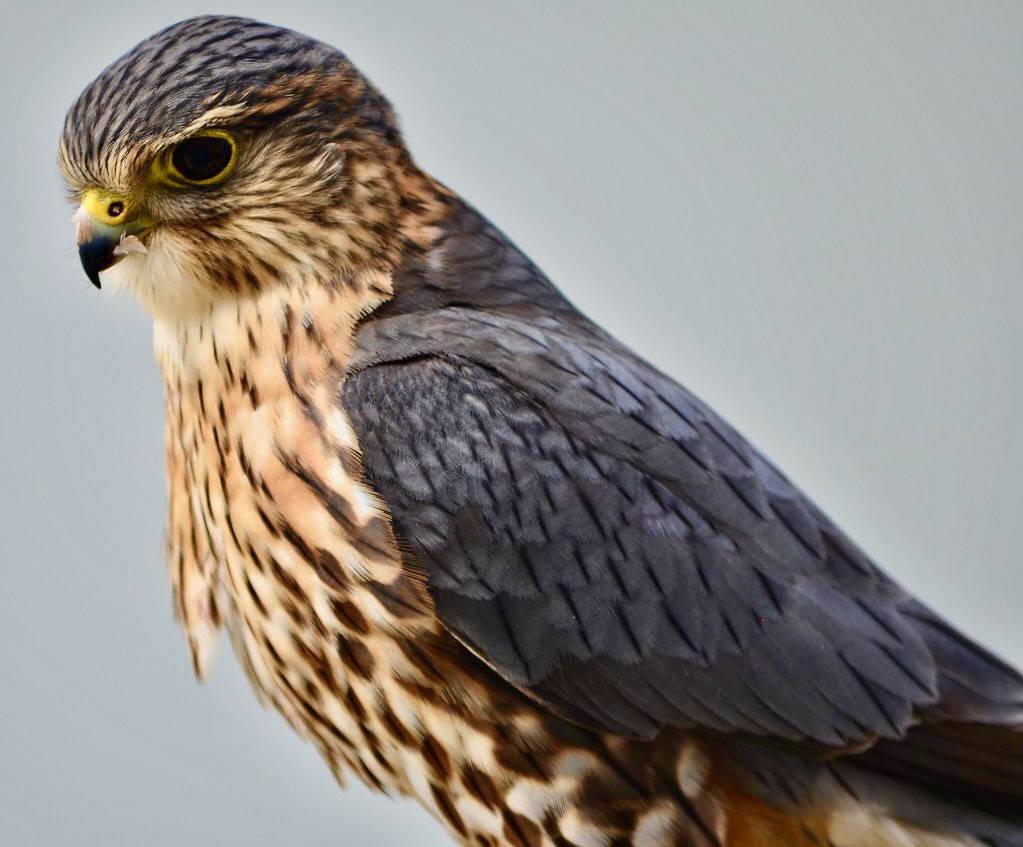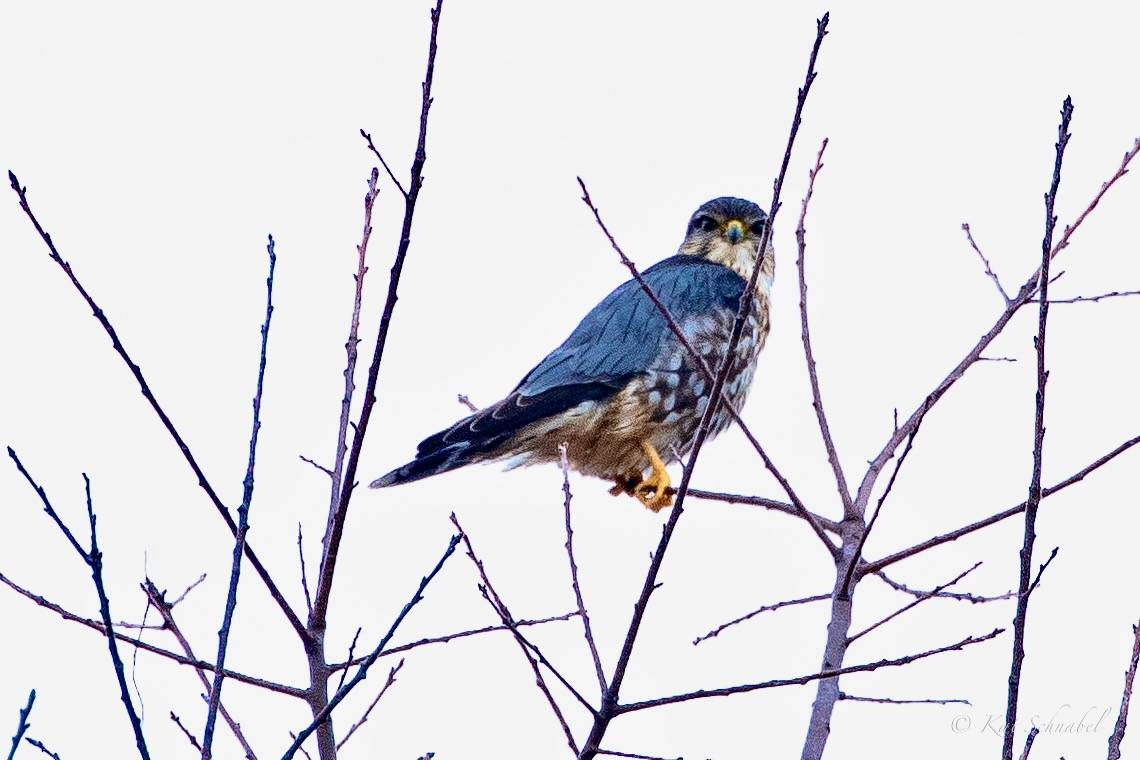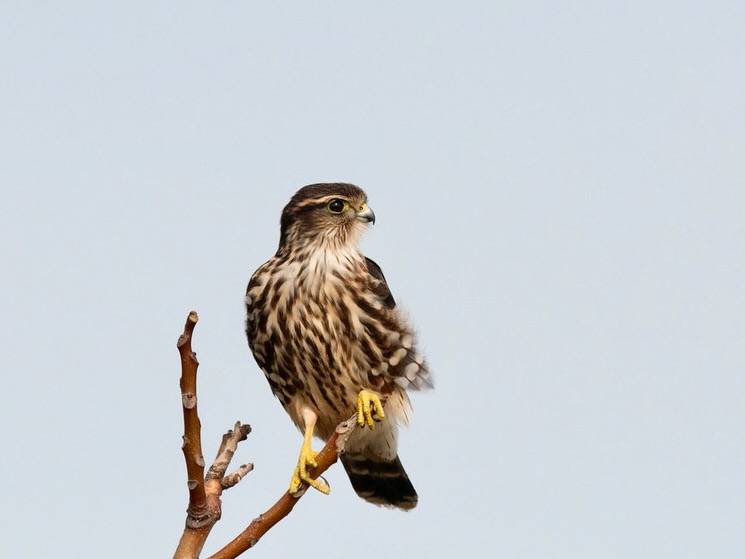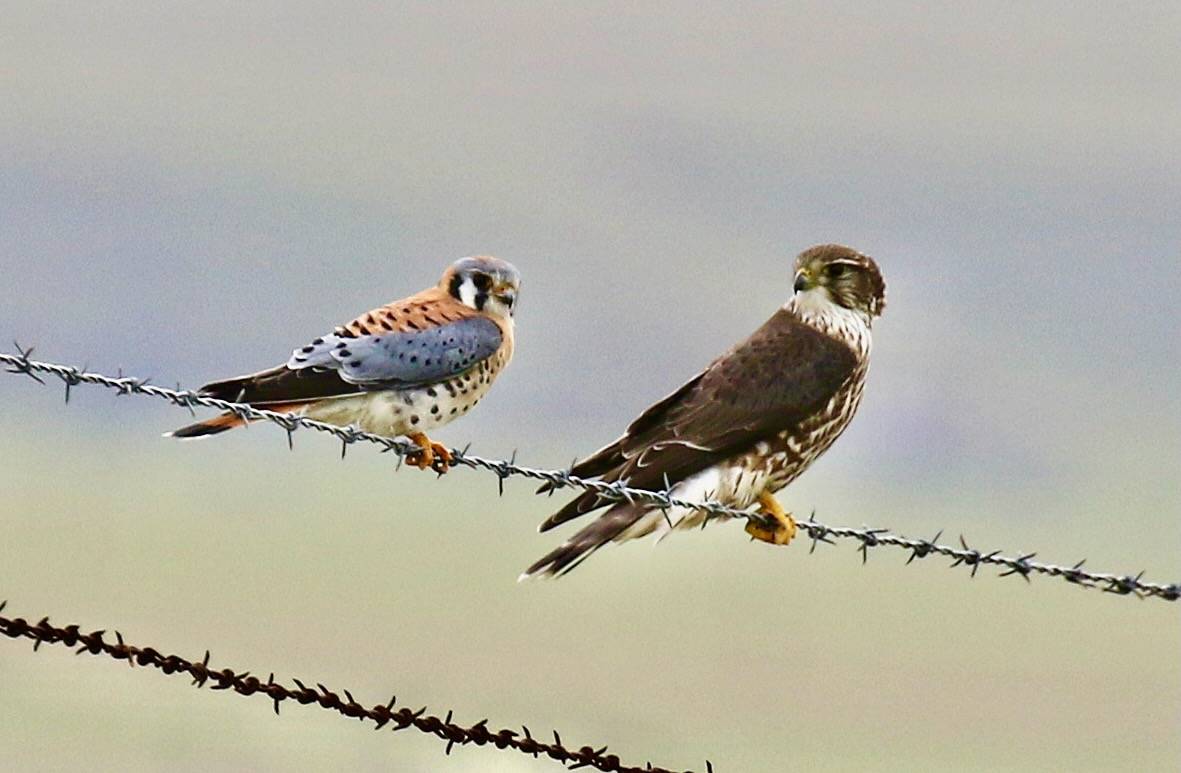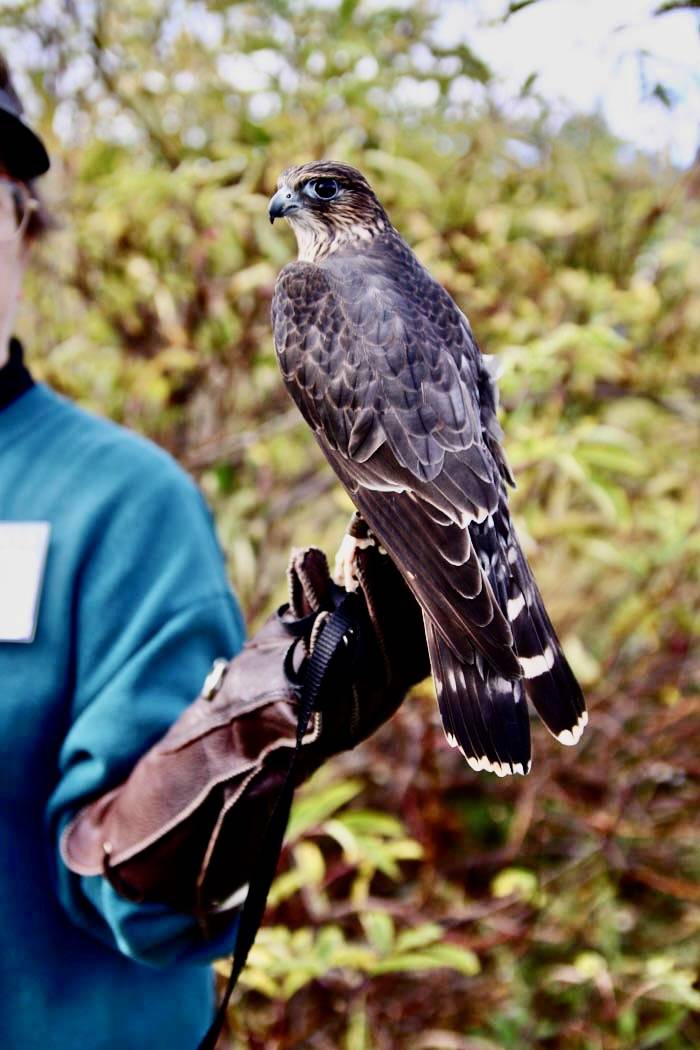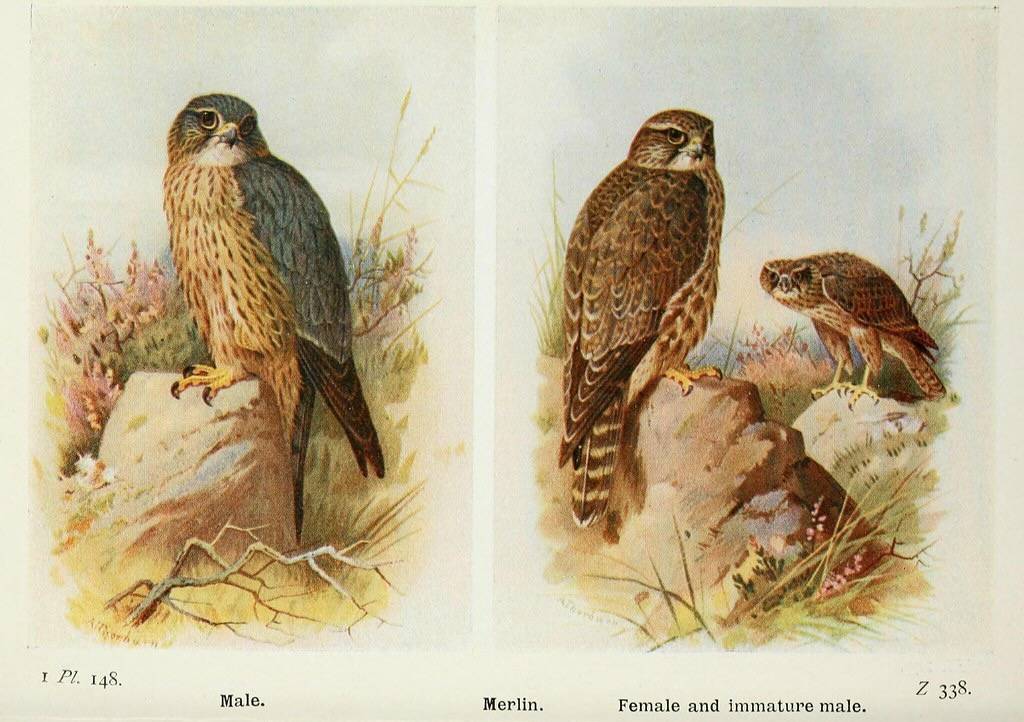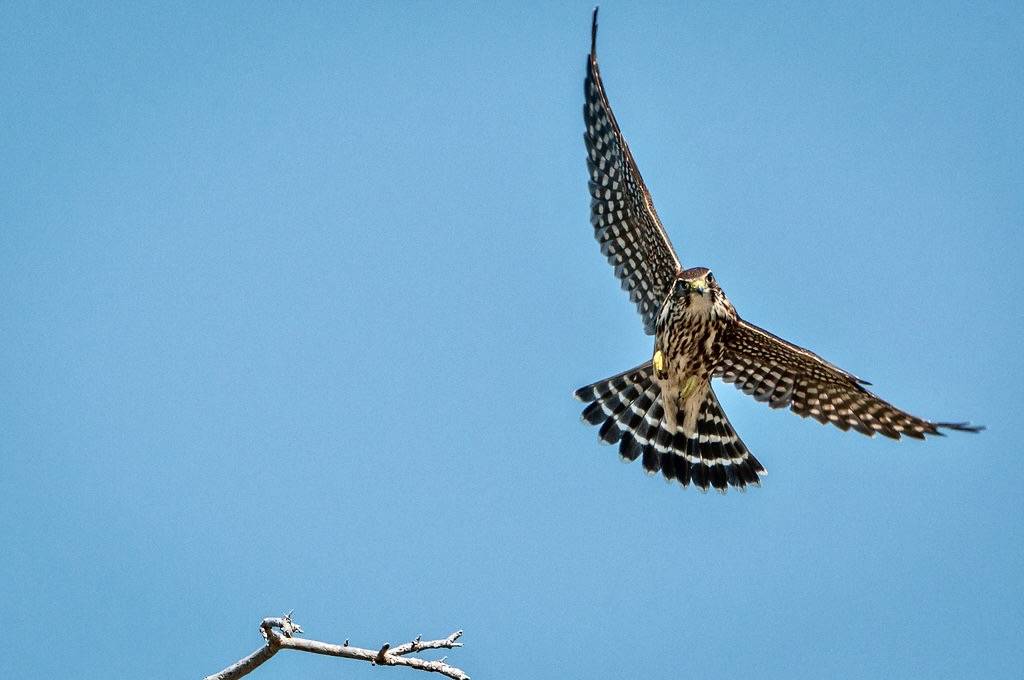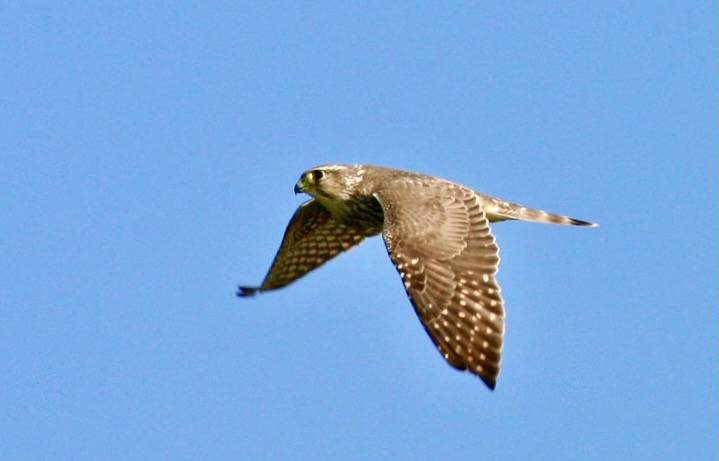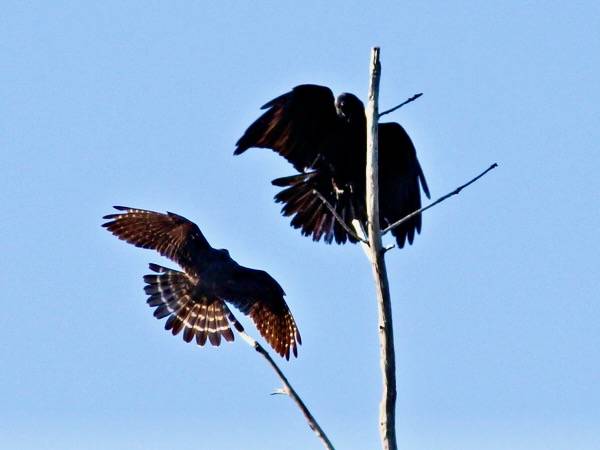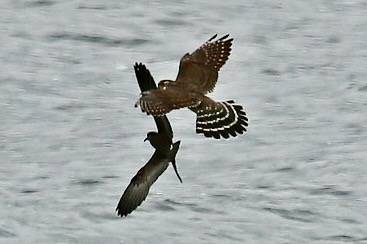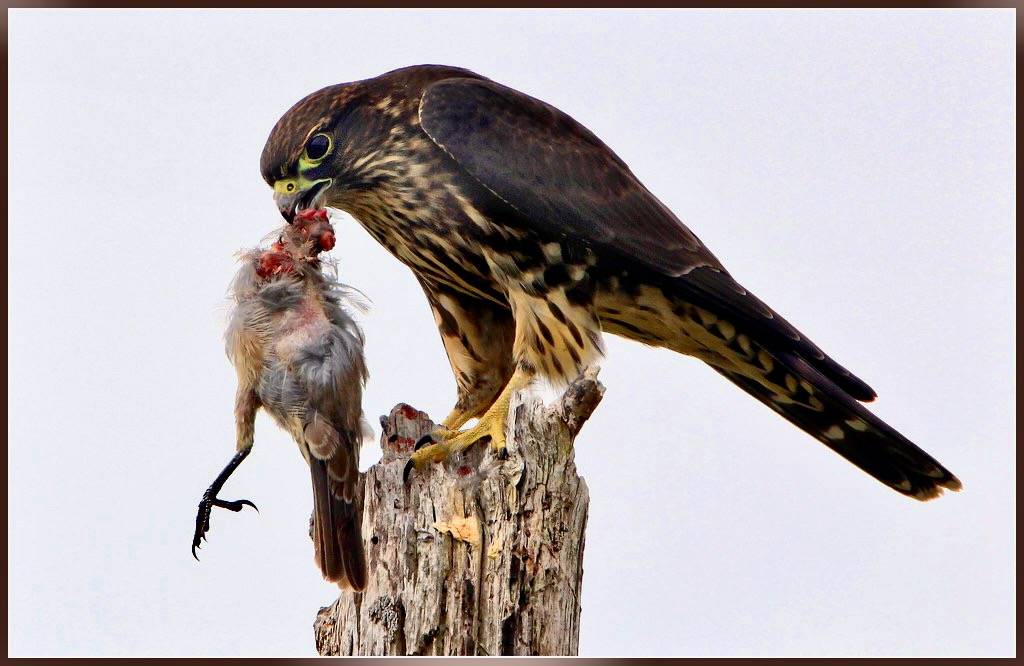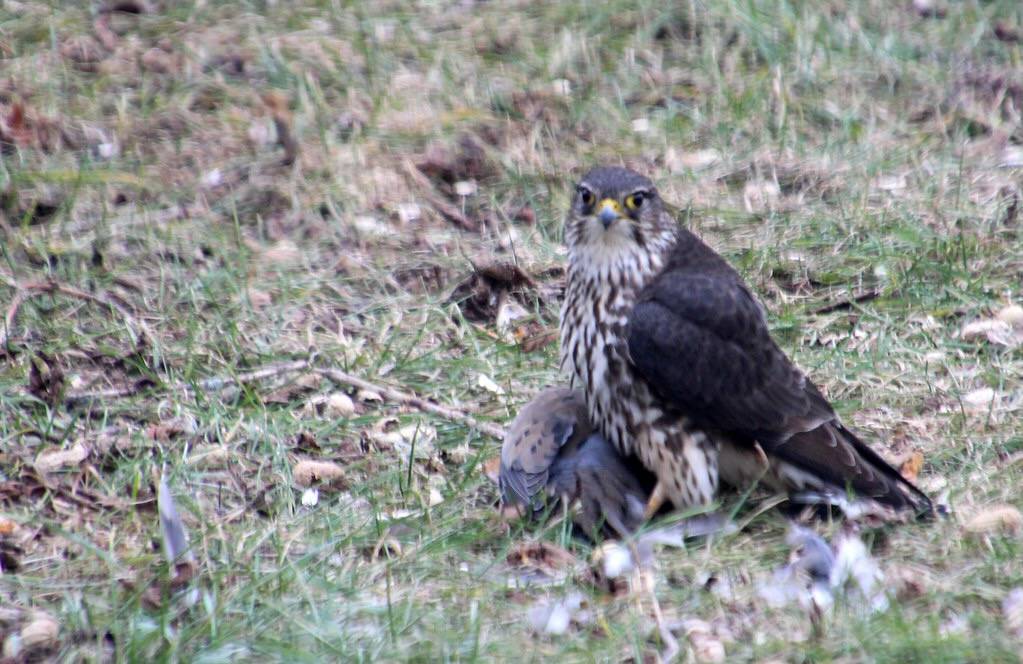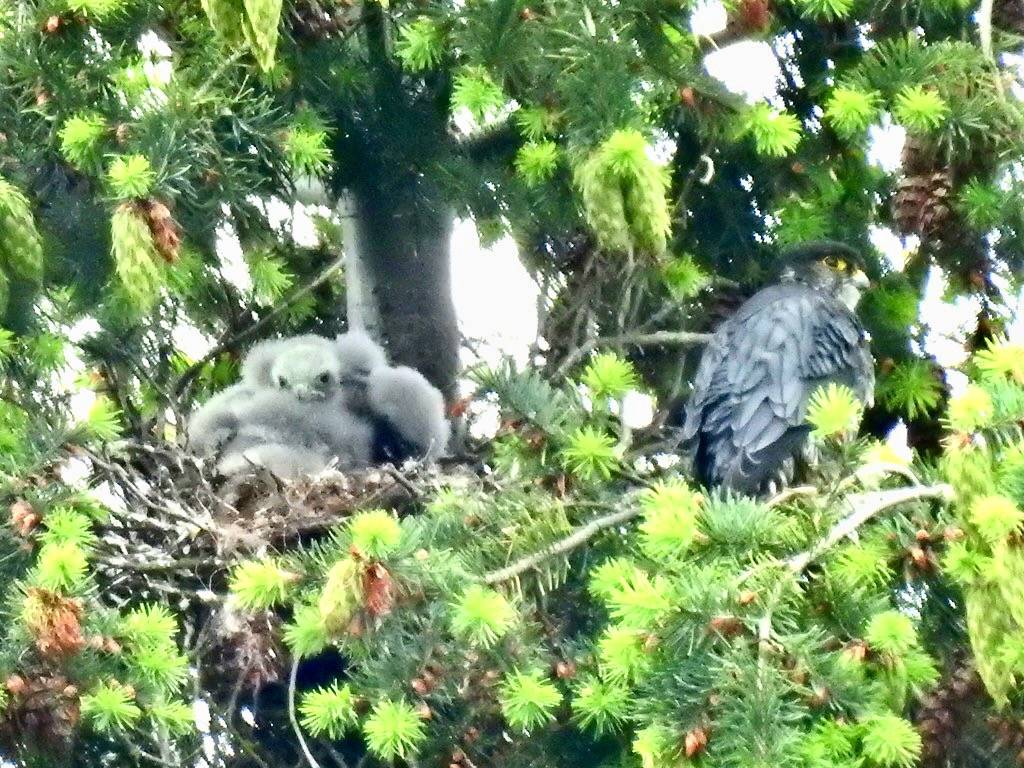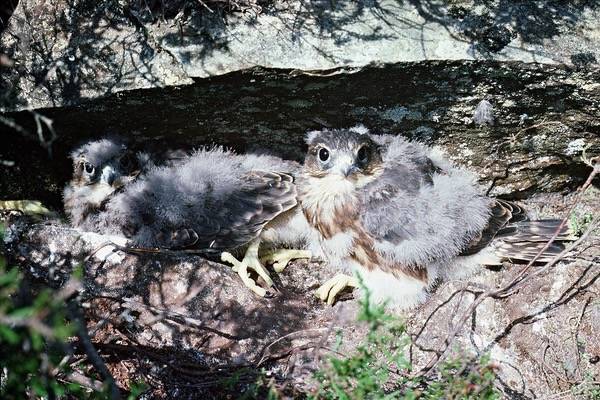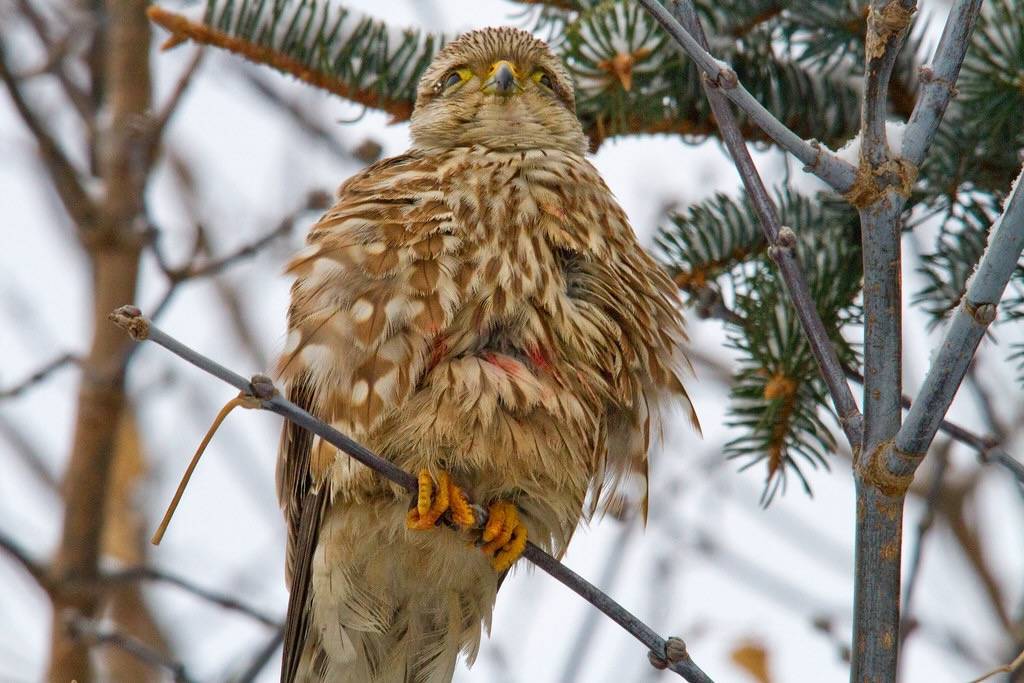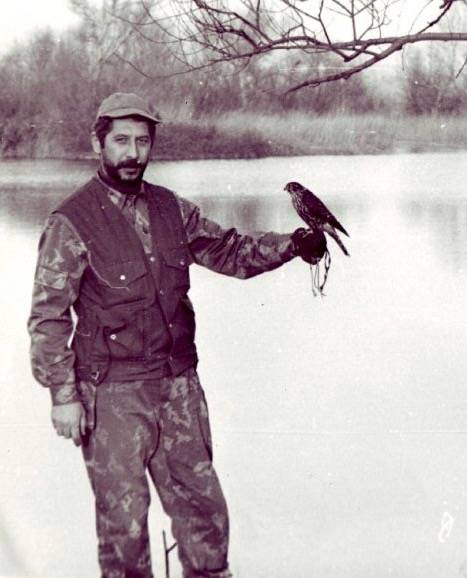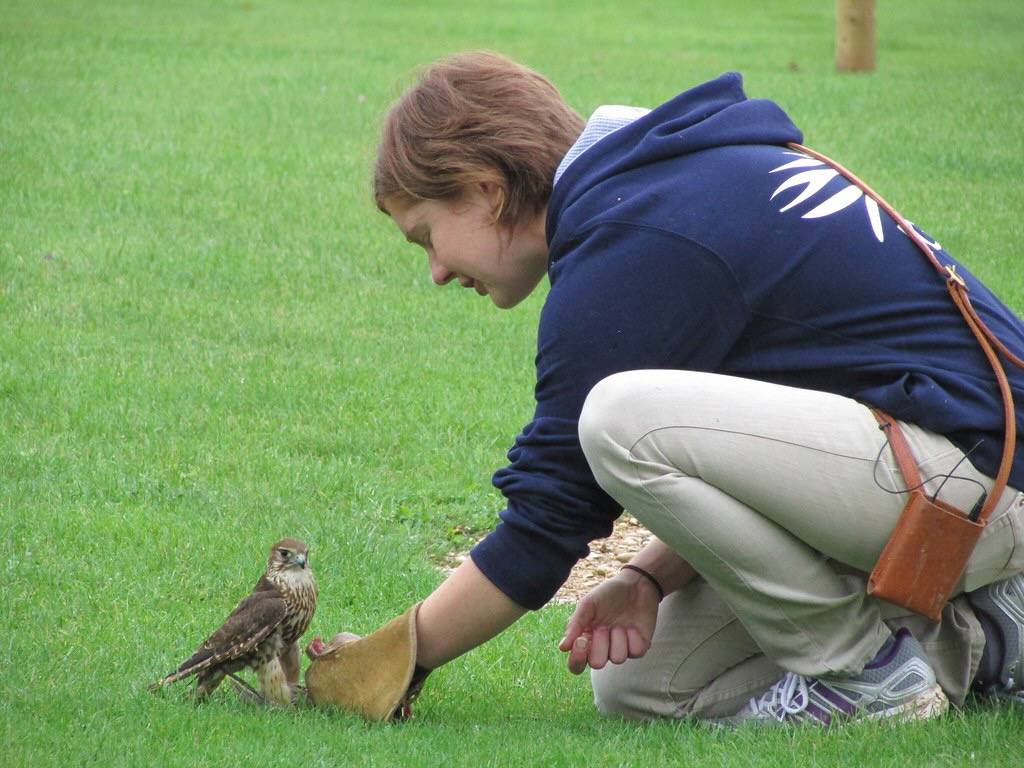Merlin
Based on sightings compiled during 2002-2023, the Merlin has only been documented three times at Salter Grove, first in January 2020, then in April and September 2022. It's hard to miss when it plunges into a migrating flock in the air, causing an explosion of birds in all directions. But then, it is equally easy to miss because the high speed chases are over so quickly.
It feeds on small birds like House Sparrows and Least Sandpipers by capturing them in the air. When birds are not flocking about, a Merlin might perch on top of tall trees around the parking lot to wait for prey to fly near, a hunting strategy commonly used by its smaller relative the American Kestrel, another rare visitor to the park.
Rather than swooping down on prey from high up like its larger relative the Peregrine Falcon, the Melin pursues targeted birds at high speed horizontally or from below, until the prey is too exhausted to fly any further. Amazingly, it has been reported to capture birds of nearly equal weight such as the Rock Pigeon.
Non-avian prey include bats emerging from caves, rodents, amphibians, small lizards and snakes. Large insects such as dragonflies and moths are also fair game. As with most raptors, Merlin females are larger than males and thus a breeding pair can fully utilize different-sized prey within a territory.
Forest edges, small woodlots, groves of planted trees all provide suitable breeding habitat for the Merlin. A mix of medium and tall vegetation is preferred while dense forests or arid treeless regions are avoided. It often recycles old nests abandoned by other birds like the American Crow. It is increasingly moving into human habitats such as parks and cemeteries where both nest sites and easy prey such as the European Starling and House Sparrow are available.
The Merlin is widespread throughout the Holarctic but is nowhere common. There are six subspecies in Eurasia and three subspecies in North America. Plumage patterns and markings are similar among the subspecies but plumage color vary geographically.
The taiga or boreal subspecies is the most likely to be seen at Salter Grove. It does not have a strong facial pattern and the male is medium bluish-grey above while the female is a warm brown. It breeds in the eastern half of the United States, wintering from the southern states to northern South America. The prairie subspecies is pale above and occurs on the Great Plains. The subspecies in the Pacific Northwest, extending to Alaska, is very dark above, nearly black at times, and has a dark mustache.
Trained as hunting companions across Europe for hundreds of years, the Merlin continues to be popular with falconers throughout its range for hunting small birds. Historically, notable practitioners included figures such as Catherine the Great and Mary Queen of Scots.

